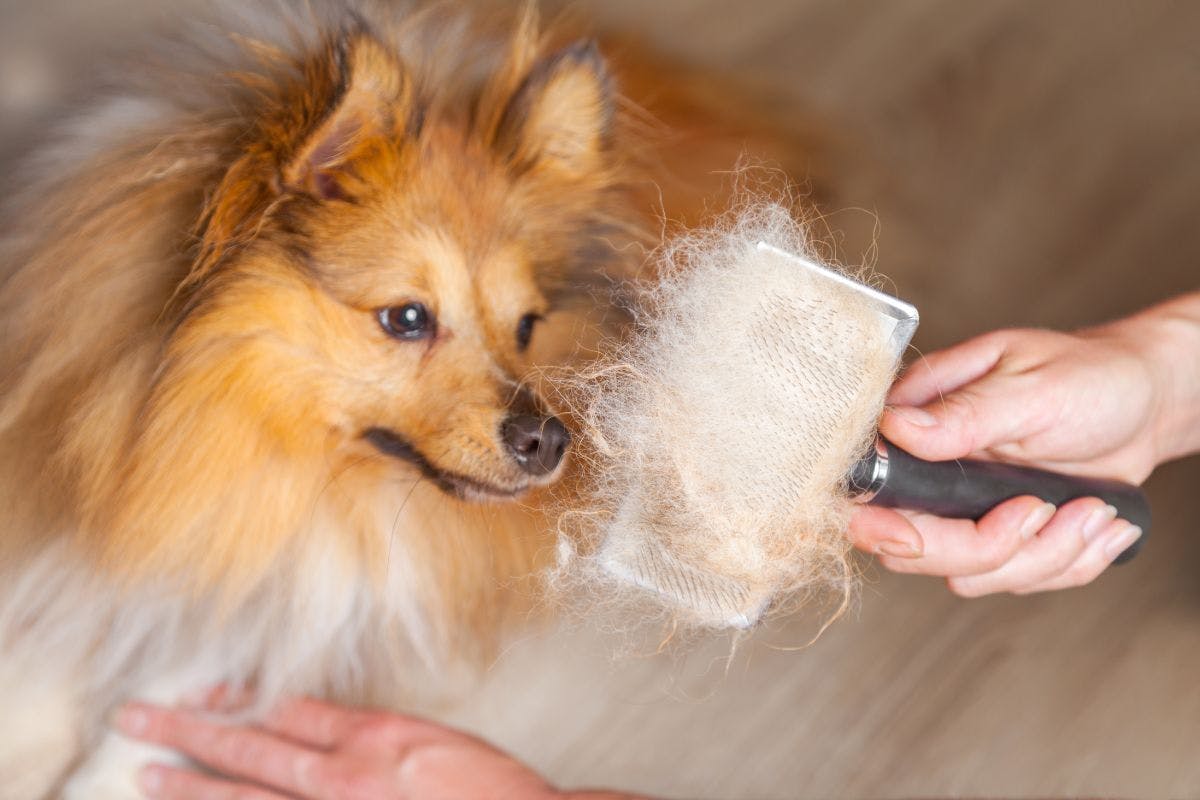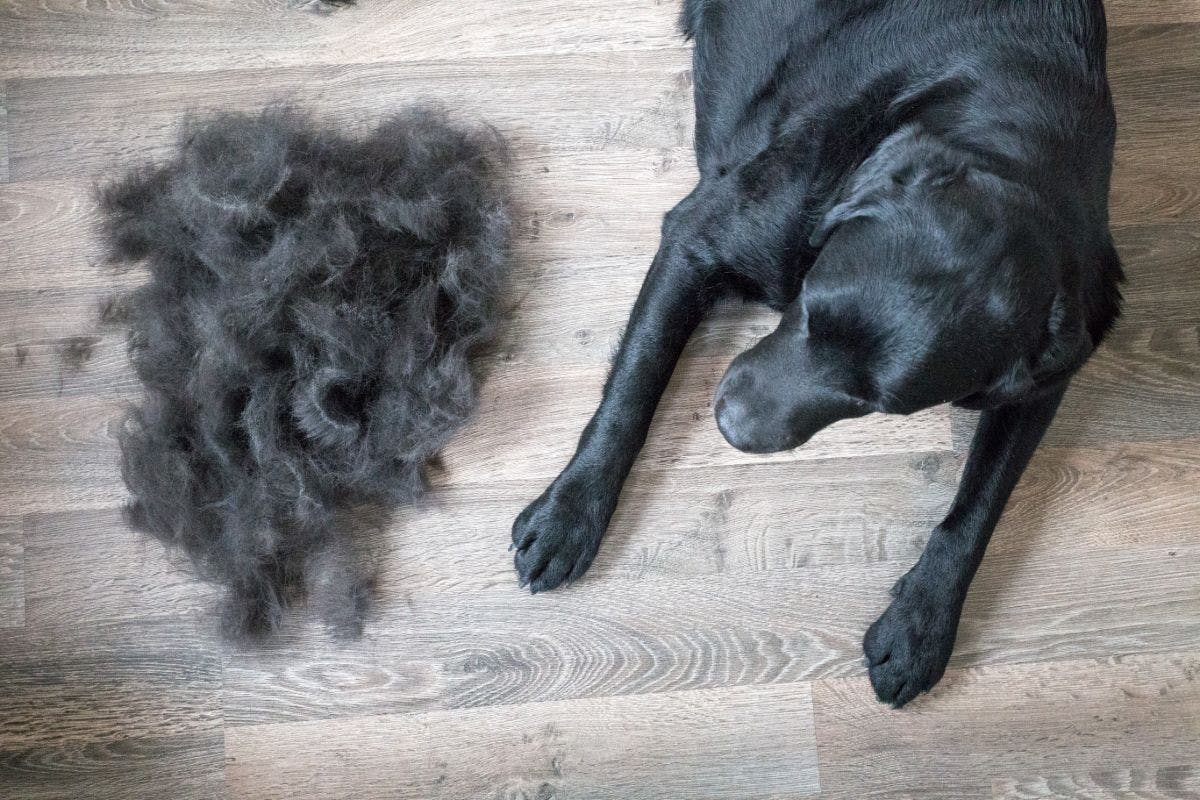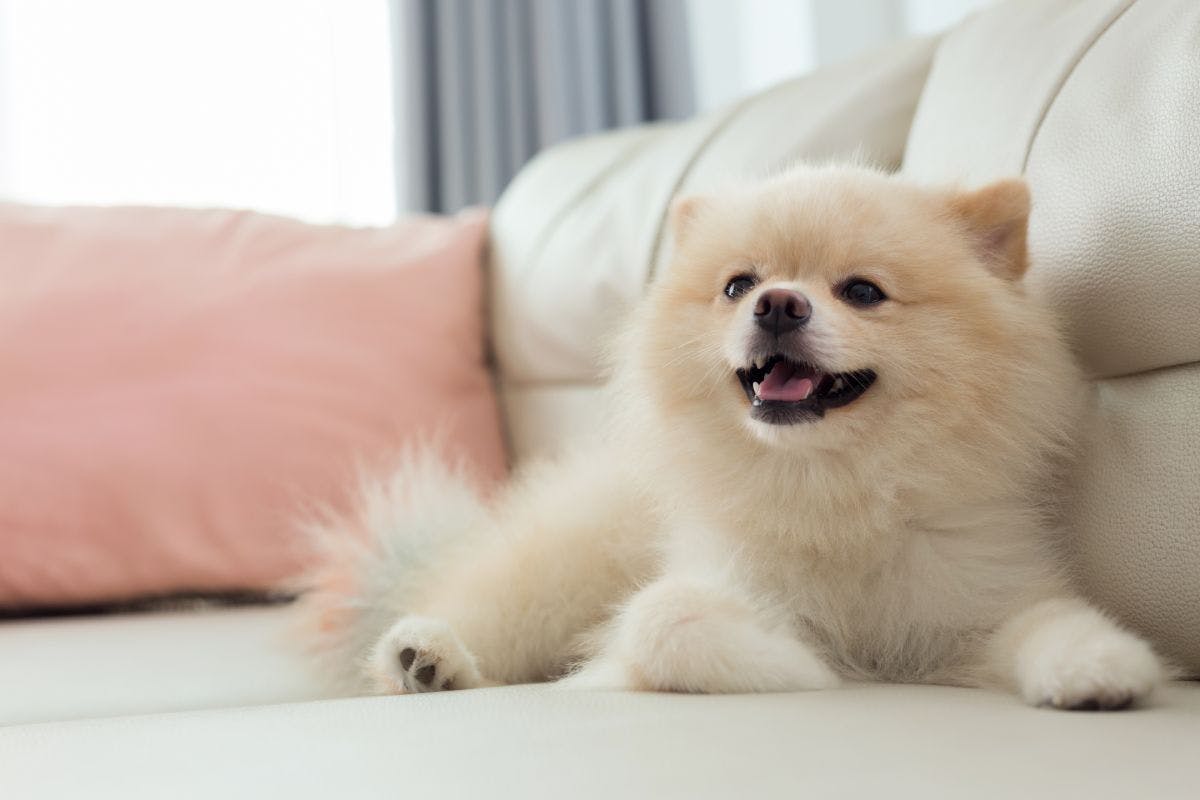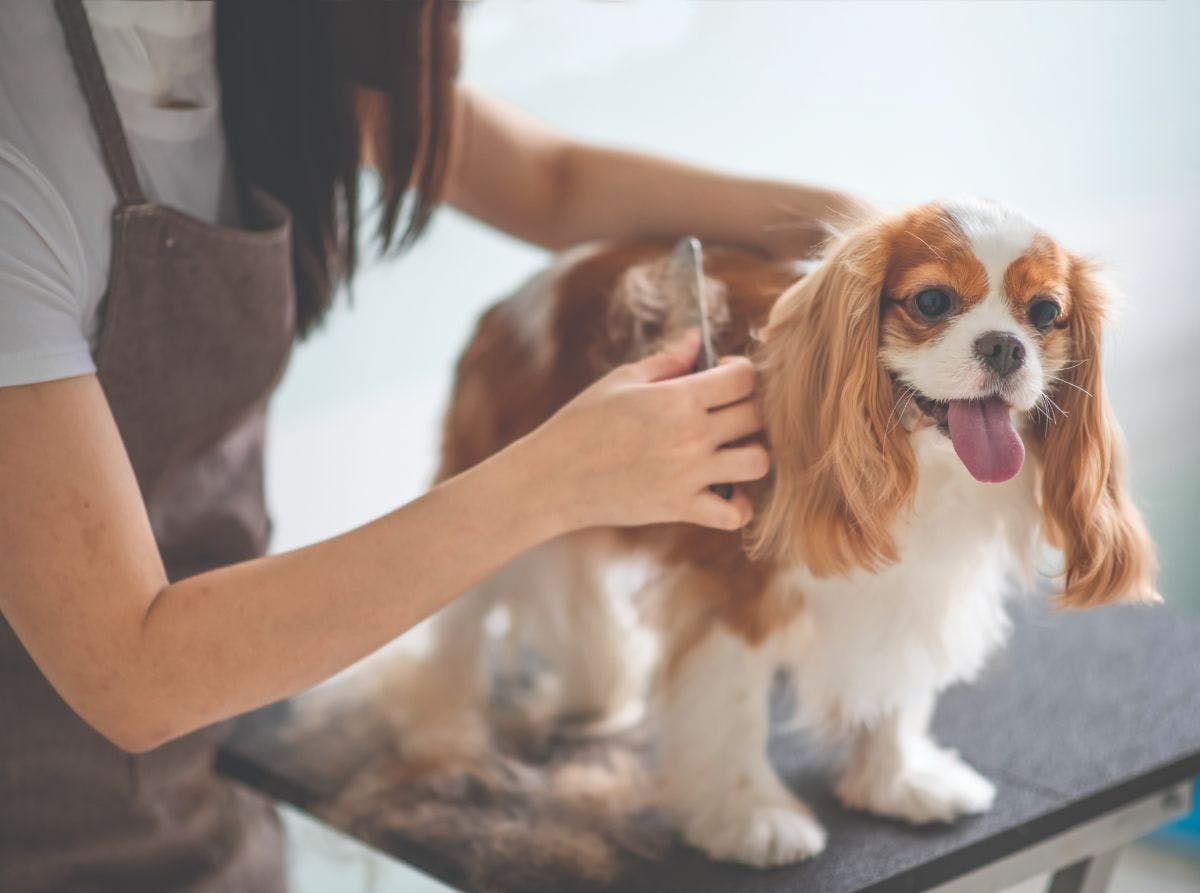
If you’re constantly battling the fur takeover in your home, maybe you need to change up your grooming routine. Or, perhaps you need a few more tips on how to keep dog shedding under control? Either way, we’ve got some tips to keep those fur clumps at bay.
With the help of PETstock Grooming Specialist, Stephanie Goodwin, we’ll tackle the following questions about dog shedding:
- Why do dogs shed?
- Do dogs shed due to the seasons?
- What are the worst shedding dog breeds?
- Can you stop dog shedding?
The main reason for dog shedding

Short answer: it’s part of the natural hair growth cycle. Dogs shed their old hair, which can be sun-damaged, dry, or broken, so that new, healthy hair can take its place. Shedding is a process that all dogs go through, and it’s nothing to raise concern.
In saying that, if you do notice your dog is losing more hair than normal, or you observe skin irritation, patchy hair loss, or anything in excess after regular grooming routines, you should speak to your local vet.
Conditions that may cause abnormal shedding
- Allergies (food or contact) - the reactions can cause drying of the skin, which causes excess hair to drop.
- Pruritus/itchy skin (skin inflammatory response) – extra itchiness for your dog may cause your dog to scratch too much and start to pull out lots of hair in the process – traumatising the skin further.
- Endocrine conditions (hypothyroidism) – if your dog has an underactive thyroid, this may cause thin, dull hair and flaky, dry skin.
- Congenital conditions (follicular dysplasia) – hair follicles that misfunction due to structural abnormality, resulting in hair loss.
- Fungal/bacterial infections – a fungal or bacterial infection can cause many issues for your dog, including skin irritation, sometimes resulting in hair loss
- Parasites (flea bite dermatitis) - if your dog is allergic to flea bites, this can cause a skin reaction and become very itchy to your dog. So, when your dog scratches excessively, hair loss can occur.
Dog shedding during the seasons

Dog shedding generally occurs with the change of seasons, from winter to the warmer months of spring and summer. Your dog’s coat essentially adapts to the environment to ensure your dog has regulated temperature all year-round. Although depending on your dog’s breed, you may notice more consistent shedding during the year.
Before the warmer months hit, your dog will shed their winter coat around springtime in preparation for the summer ahead.
Note: Most dogs have a double coat, a top coat and an undercoat.
- Top coat: The top coat protects your dog from the sun and has a water-wicking function.
- Undercoat: The undercoat serves as insulation for your dog and cools them down in winter while keeping them warm in summer.
“Your dog’s coat changes are part of their internal circadian rhythm – the shedding is ultimately dependent on exposure to sunlight. So, although dogs shed all year-round, there are times where they will shed more due to the season and environment. Once the undercoat sheds, the air can circulate under the guard hairs, allowing the skin to cool.” - Stephanie Goodwin, PETstock Grooming Specialist
Dog breeds that shed the most
While all dog breeds shed a little bit (although not always noticeable), there are some dog breeds which shed a lot more hair than others due to having a double coat with a dense under coat, these include:
- Chow chows
- Huskies
- German shepherds
- Malamutes
- Corgis
- Golden retrievers
- Samoyeds
- Border collies
- Akitas
Plus, more!
“You’ll notice a lot of the shedding occurs during a change in season, where your dog’s body will attempt to regulate temperature. For example, a husky’s coat will go into a ‘blowing out’ phase where you will observe clusters of under coat peeking through the top coat.” - Stephanie Goodwin, PETstock Grooming Specialist
What’s a coat blow/blow out phase?
Double-coated dog breeds have a coat that reacts to the environment a little differently than other dog coats. A coat blow or blow out refers to the process of dog shedding where the coat changes dramatically from a winter coat to a summer coat – which is more intense for the above breeds listed. The hair of the undercoat will release by the handful in large clumps.
How to stop dog shedding

Unfortunately, if you're after an answer on how to stop your dog shedding altogether, you’re out of luck – it’s not possible. You won’t find any simple dog shedding remedies or solutions; it all comes down to a good grooming routine. You can keep those beautiful locks from taking over your home by getting into the habit of regular brushing and grooming. The right grooming routine will also help your dog maintain healthy skin and a beautiful looking coat by stimulating natural oils for lustre and growth.
“A common misconception is that if you shave your dog, there will be less shedding, but shorter hair will still continue to shed even after a shave. In fact, in some cases coats will be affected post-shave with clipping alopecia, where the hair quality is compromised and may not grow back.” - Stephanie Goodwin, PETstock Grooming Specialist
How to maintain your dog's coat
- Washing: You should wash your dog about once a month, but be mindful not to over wash your dog, as this can strip out good oils from their skin and coat. Washing your dog will also help loosen the hair which is ready to come out.
- **Brushing: **If you can get into the routine of brushing your dog once or twice a week (or even make it part of your daily routine!), this will help keep shedding under control. For some double-coated breeds, the hair will clump and remain in the coat, which means you’ll need to brush this out to avoid knotting or matting.
*If the clumps remain in the coat for a prolonged amount of time, this can cause skin irritation and discomfort with the matted fur pulling on the skin.
Key tools for grooming and shedding
Just like for humans, there are many grooming tools and brushes available to maintain your dog’s coat, each with its own unique function. Here are some of the best dog shedding tools available for dog owners:
- De-shedding rake: features wide-set teeth to help brush through thick hair and undercoats. Especially effective for thick hindquarters (rump area) of breeds such as Border collies, Retrievers, German shepherds and more.
- Comb: an excellent tool for finishing the de-shedding process, as it smooths out the coat, allowing it to lay flat. It also helps with detangling and drawing out loose hairs.
- Slicker brush: this brush is ideal for gentle brushing and detangling, as it lifts out undercoat and smooths overall coat.
- Pin bristle brush: soft pins on the ends of the bristles make this the perfect brush once you have finished de-shedding and need to smooth out the coat. Great for detangling and separating hair.